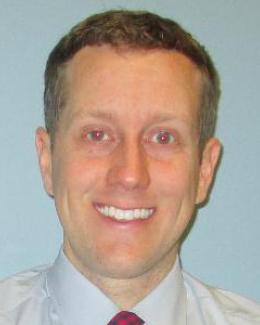October 2, 2018 — In support of industry’s development of advanced reactor designs, the US Department of Energy’s Office of Nuclear Energy has named Brad Rearden as the national technical director of its new Nuclear Data and Benchmarking Program.
The program will collaborate with companies working on advanced reactor technologies to eliminate a key gap in the road to the next generation of nuclear energy—fundamental physics data. The program will also work with the Nuclear Regulatory Commission on providing data and benchmarking tools to enable licensing of these technologies.
“It’s a great honor that DOE-NE recognizes me as someone who can come in to help such a vital program,” said Rearden, a nuclear engineer at DOE’s Oak Ridge National Laboratory. “There are a lot of new innovations within the area of reactor development, and it’s important for us to let each company know we’re here to help them succeed.”
The current collection of nuclear data comes from 75 years of testing and operating today’s reactor fleet. That data is then used in various computational tools to assist industry in running their reactors safely and efficiently. It’s also a part of what the NRC relies on for licensing.
However, new reactor designs are very different—from using molten salts or gas as the cooling mechanism to advanced new materials and high-burnup fuel—compared to current light water reactors. This means that today’s nuclear data does not offer a complete picture of how future reactors will operate.
“We know the uncertainties around existing reactors because we’ve built and operated them for years. With advanced designs, the current nuclear data has rarely been exercised for these types of configurations, so we are still learning more about how neutrons react in these systems,” he said. “We will bring experts and capabilities together to perform the necessary experiments to gather data used to simulate the reactor physics.”
The new program plans to leverage the power of the entire national laboratory system and international partners to access facilities for physics tests. Rearden and his team will then work through the current data pipeline for archiving, processing and distributing enhanced nuclear data.
“Generating nuclear data is extremely complicated and an international effort. You need the material for experiments, facilities for testing, ability to interpret data and access to scientists doing experiments, such as those at ORNL’s Spallation Neutron Source. It’s deep discovery science.”
Rearden and his team will also look at existing benchmarking experiments—small-scale experiments that are used to analyze how accurately nuclear data predict how full-scale systems will perform.
Worldwide there are many benchmarking experiments that can be leveraged to determine nuclear data performance; however, if it’s shown that existing benchmarking experiments do not meet current needs, the program plans to build new tests.
“We have started having meetings with industry focused on benchmarking needs for advanced reactor development,” Rearden said. “And we’ve been able to already show that existing experimental benchmarks will help in the assessment of transportation packages. But there are many other experimental needs to look at as we stand up the entire program.”
In his new position, Rearden will draw from his experience in leading programs that are directly tied to the nuclear data community. From 2009–2018, he directed ORNL’s SCALE Code System—the licensing code used by the NRC for reactor physics evaluation—and turned it into the most requested nuclear analysis code package in the world, with more than 9,000 users in 58 nations across industry, universities and other research laboratories.
He has also served in various leadership roles supporting the Consortium for the Advanced Simulation of Light Water Reactors and the Nuclear Energy Advanced Modeling and Simulation Program, both of which are working to improve modeling and simulation for nuclear energy.
“In being a part of SCALE, CASL and NEAMS, I’ve had the opportunity to develop great relationships with industry partners and the NRC that will be extremely helpful in this new role,” Rearden said. “As a doctoral student at Texas A&M University, I worked on uncertainty analysis for nuclear data, which helped identify gaps. I’ve been preparing for this type of program since the beginning of my career.”
First up for Rearden and the new program is setting the correct priorities. The nuclear data pipeline generally takes anywhere from three to five years, from identifying a need to ultimately delivering a product.
“This is an area that’s captured the attention of everyone. Because of this engagement from all stakeholders, I believe we will play a fundamental role in answering some tough questions related to the next generation of nuclear power.”
ORNL is managed by UT-Battelle for DOE’s Office of Science. DOE’s Office of Science is the single largest supporter of basic research in the physical sciences in the United States and is working to address some of the most pressing challenges of our time. For more information, please visit https://energy.gov/science.


